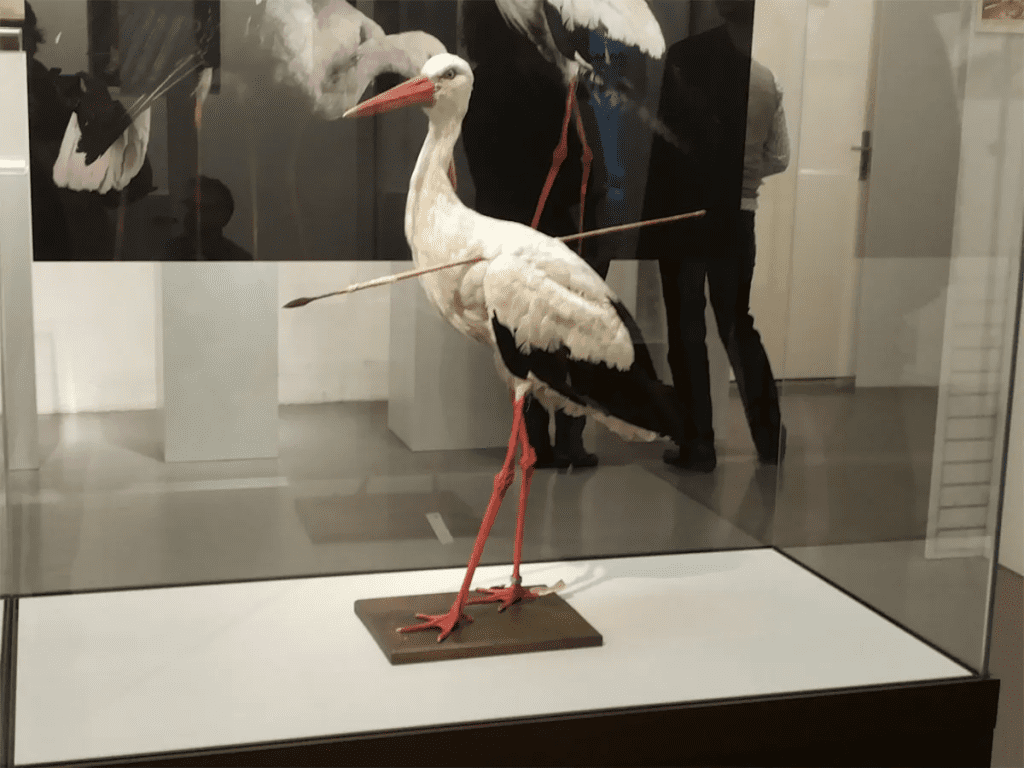In 1822, something extraordinary happened in northern Germany a moment so unusual that it forever changed the course of scientific understanding about bird migration. A white stork, native to Europe, crash-landed in the German town of Klütz. But this was no ordinary stork. Embedded in its neck was a long, African wooden spear. Somehow, the bird had survived a deadly wound, traveled more than 2,000 miles, and returned home carrying undeniable proof of a continental journey.
This stork would go on to become known as the “Arrow Stork”, and its astonishing story helped answer one of the biggest questions of the time: Where do birds go in winter?

A Mystery That Baffled Scientists for Centuries
Before the discovery of the Arrow Stork, Europeans had long speculated about what happened to birds in the winter. Some believed they hibernated under water or buried themselves in mud. Others thought they turned into different species altogether or flew to the moon. Migration across continents was simply too far-fetched for many to believe without evidence.
While some naturalists had guessed at the possibility of long-distance travel, no solid proof existed until 1822.

A Bird with a Message
When villagers found the injured stork in the fields outside Klütz, they were shocked to see a 30-inch spear piercing straight through the bird’s neck. Upon closer inspection, it was clear the spear was not of European origin. In fact, it was made from African wood and crafted in a style typical of Central African tribes.
Video:
The Arrow Stork | 100 Wonders | Atlas Obscura
Despite the trauma, the stork had managed to continue flying and make it all the way back to Europe. It didn’t just survive it carried in its body the evidence needed to prove a groundbreaking truth: birds migrate over thousands of miles, often across continents.
The discovery sent waves through the scientific community, finally providing the concrete proof needed to confirm what had previously only been a theory.
From a Scientific Breakthrough to a National Icon
The stork was carefully preserved and mounted for display. Today, it can still be seen at the University of Rostock in Germany, where it continues to fascinate visitors and scholars alike. Known in German as the “Pfeilstorch,” or “Arrow Stork,” it remains one of the most iconic biological specimens in the country.
Video:
Pfeilstorch
Interestingly, this was not the only stork to return to Europe with a spear in its body. Since that first discovery, more than two dozen other storks have been documented carrying similar African projectiles. But the 1822 stork was the first and perhaps the most famous.

Why the Arrow Stork Still Matters
So why does this bird’s story still matter today? Because it marks a turning point in how we understand the natural world. The Arrow Stork proved something humans had long struggled to accept: that small animals like birds could undertake massive, life-threatening journeys across oceans and deserts. In a time before GPS, radar, or even modern maps, it was a revelation.
This moment also helped kickstart a new era of ornithology and wildlife tracking. The 19th century saw a surge in bird banding, field observation, and eventually, satellite tracking all built on the foundation laid by one brave bird that wouldn’t give up.

A Story of Survival and Wonder
More than anything, the story of the Arrow Stork is about resilience. Imagine being wounded in a distant land, with no way to ask for help, and still choosing to fly forward. It’s the kind of tale that reminds us how incredible nature really is and how even the smallest creatures can become part of something far bigger than themselves.
The next time you look up and see birds flying in formation across the sky, think of the Arrow Stork. Think of the questions it answered, the walls it broke down, and the journey it endured. One bird. One spear. And one story that changed science forever.


